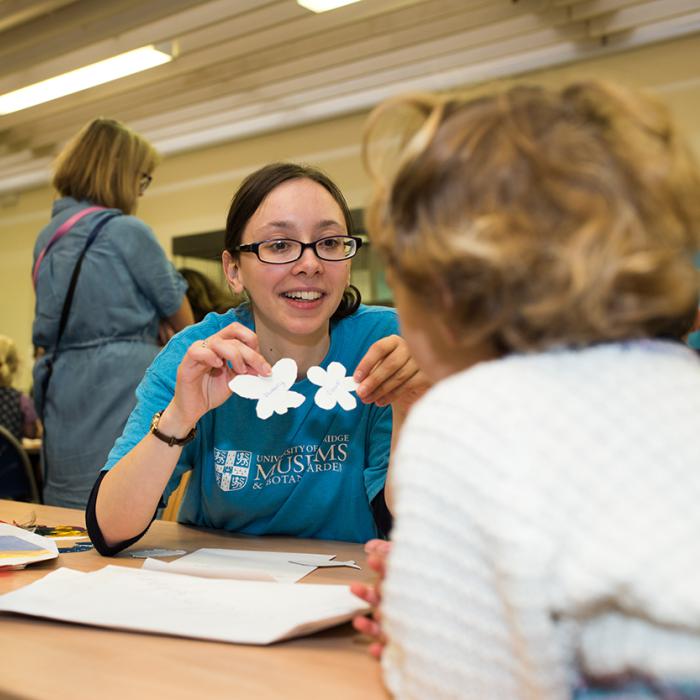Of all the insect pollinators, butterflies are unquestionably the most attractive. Their wing shapes, colours and intricate patterns make for a fascinating area of study for drawing and design. In this introductory course we will consider their structure and how through the mediums of pencil, pen, watercolour and coloured pencil they might be illustrated. Original artwork from Ian’s own archive will provide examples which demonstrate the various styles of butterfly illustration. These will include formal studies to assist in identification to species set in their natural habitat.
This course is designed to develop your watercolour technique and provide you with tools which will help you to continue to develop as a watercolour painter. Over the session you will be introduced to various approaches and methods to apply your own painterly vision to your practice. We will look at the gardens and how to approach this exciting and vibrant subject for yourself ‘en plein air’. You will be briefly revisiting the basics of watercolour technique and introduced to practical applications of a limited palette technique with professional painter, John Wiltshire.
Whether you are redesigning your whole garden or just looking to plant up a single bed, having accurate information of aspect, dimensions and soil types will ensure that what you imagine will indeed fit, and what you plant will thrive! We will be hands-on in the Garden learning surveying skills such as linear measuring, offsets, triangulation and level changes. You will also learn how to create a scale drawing of your garden that can form the basis for ongoing design and planting.
This two day workshop will give you the chance to draw and paint some of the beautiful and diverse grasses and sedges that grow in the Botanic Garden’s collection. You’ll get to learn a bit about these plants, and have the chance to examine and draw them in detail. Day one will focus on grasses with some information on grass anatomy and variety, then we’ll be drawing several different species that we’ll gather from the gardens, and looking at their flowers and seeds up close. After, we’ll get down to work on a watercolour painting of one or several of these plants.
The aim is to develop an understanding of the evolution and systematics of the major plant families and the practical skills needed when approaching the identification of plant material. Teaching is through a combination of practical sessions and lectures covering exemplars of major flowering plant families, with an emphasis on those of North Temperate regions. The course makes extensive use of plant material and the living collections across the Botanic Garden and includes a visit to the University’s Herbarium, housed in the Sainsbury Laboratory.
June is the time of year when there is an abundance of brightly coloured flowers in the Garden thus enabling participants to produce a summer bouquet in watercolours. We will have a range of blooms to choose from the extensive collection of flowering plants at the Botanic Garden. An important element of this course will be looking at composition. Time will be spent on planning a balanced layout of stems, blooms and spaces.
Our gardens are a potential haven for a diversity of wildlife species including hedgehogs, butterflies, bees, and birds. When combined together they can provide habitat for a staggering diversity of species if they are managed in a wildlife friendly manner. One dedicated garden owner recorded almost 2700 species in her suburban Leicester garden over a 30 year period. Beyond the more conspicuous common garden visitors such as birds and butterflies, many of us don’t know where to start in terms of recording the more elusive inhabitants such as bats, hedgehogs, moths and other invertebrates.
For those who are new to the study of flowers, the glorious yet seemingly infinite variety of colours and designs can seem overwhelming. This two day workshop will help you understand the structure of flowers and the fascinating yet standard ways in which they differ in order to achieve their common purpose – the production of seeds and the perpetuation of the species. The course will also give you an insight into how floral design helps to group our plants into an internationally recognised classification system which in turn provides us with the means to identify and name them.
Chemicals are often portrayed in a very negative way in advertising, marketing and by the media, with some products being promoted as being “chemical free”. However, chemicals are the basis for all life and everything around us is made of chemicals. This couse will delve into the fascinating world of plant chemistry, looking at the chemicals made in plants that provide the colouration, aroma and taste of familiar and unfamiliar ornamental and edible plants and showcase how this chemistry helps the plant to survive, thrive and reproduce.
A look at what’s involved in taking beautiful photographs of plants and gardens with Botanic Garden photographer Howard Rice. This course is aimed at those who already enjoy garden photography but want to find out how they can improve by developing a better understanding of some straightforward techniques. There will be a combination of indoor tutorials and practical sessions outside in Cambridge Botanic Garden. You will be encouraged to ask Howard about particular aspects of garden photography that interest you and problems that you might have encountered.

